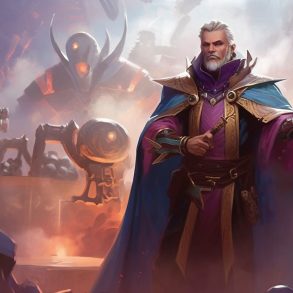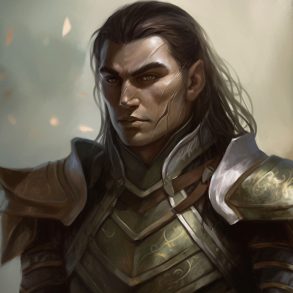You’ve trained for this, read the sacred texts, and forged your oath with a power greater than yourself. An oath that binds you to service, that drives you to be the change you want to see, to protect the innocent, and punish the guilty. Now with a shining plate upon your chest and the reassuring weight of justice at your hip, you stride forth down the road ahead, ready for the trials, tribulations, and dangers ahead. You’re ready to play a Paladin, let us show you how.
In this Paladin DnD 5E guide, we’ll train you on your options as a Paladin, as well as supportive choices you can make to build your character to achieve what you want. Whilst reading through this guide, you may find our articles on DnD terms and list of DnD books (and their common abbreviations) helpful.
This Paladin 5E guide will evaluate each option for the Paladin on a scale of 1-5– this is a rating of the abilities’ potency and overall usefulness, primarily focusing on combat. That said, I will still evaluate everything. This can aid you to weigh any choices you might be considering at a glance, helping you know what to expect and make changes accordingly if desired. The rating scheme is:
1 – Usually a bad choice, to be avoided
2 – Below average, this can apply to powerful but very niche abilities
3 – Average to Good, you won’t go wrong with it
4 – Very good
5 – Amazing, a must-have if there is such a thing
Be sure to check our other DnD 5E class guides: Artificer 5E guide, Barbarian 5E guide, Fighter guide, Monk 5E guide, Ranger 5E guide, Rogue 5E guide, Sorcerer 5E guide, and Warlock 5E guide.
Changelog
Version 1.3
Version 1.2
- Added Mordenkainen Presents: Monsters of the Multiverse races
Version 1.1
- Added Owlin race and Strixhaven feats
Version 1.0
- Initial guide
Disclaimer
This rating system exists to best help you understand the effectiveness of all the options available to the class for you to build and enjoy your character. Remember though, your fun comes first; it’s actually very difficult to build a character that is entirely bad in DnD 5E, so if you have a concept that doesn’t rate highly, you might still have fun playing it. This is a guide, not a contract written by Asmodeus. Let it advise you and not force you away from your own ideas.
It’s recommended to have your book/PDF/DnD Beyond page open to reference and follow along with the guide.
Table of Contents
Paladin DnD 5E Class Abilities Guide
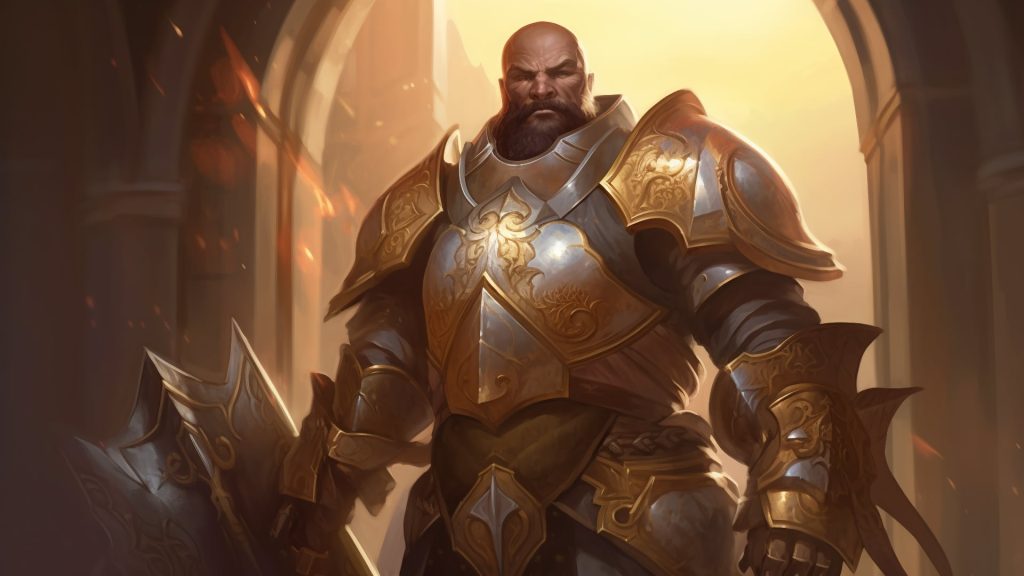
Hit Dice 4 – A d10 is the standard for most martials and almost as good as it gets, you’ll have a decent amount of HP for melee, but you may want to invest in higher Con if you want to be a meat wall.
Proficiencies
Armor 5 – You have them all! So you have plenty of choices no matter what your primary stat is.
Weapons 5 – It can’t get any better than all of the options, whilst you’re not suited to ranged combat, being able to use a bow on occasion can be handy.
Tools 1 – Who has time to learn how to use a tool when you have double period smite class?
Saving Throws 3 – Wisdom is a nice save to have once you get into mid to late tier 2 and beyond, Charisma is incredibly rare but bad to fail. Whilst the saves here themselves are only a 3, the Paladin has plenty of tools to be great at saves regardless.
Skills 2 – Not a good list at all really, Athletics is recommended but you can choose whatever you prefer for the second. It would have been nice to have seen Perception offered here, but alas.
Divine Sense 3 – For a ribbon, this isn’t bad and is situationally pretty useful. The kind of scenarios you’d want this are if you suspect a creature is disguised, invisible, or hiding. The 1 + Cha formula allows you to build a Paladin with a low Charisma and still get use out of this ability, or spam uses of it if you’re a more typical build.
Lay on Hands 5 – Easily in contention for one of the best healing abilities in the game, the formula of 5 x Paladin level scales very nicely, whilst the flexibility of healing however much you want lets you deep heal or scrimp and save your points. The added utility of being able to cure a disease or remove the poisoned condition really allows the Paladin to act as a comprehensive healer with a single feature. This is also the only way to cure a disease without a magic item or other outside help at levels 1 and 2!
Fighting Style 4 – Not as impactful for the Paladin as it is for the Fighter, but there are still some nice options here to enhance the kind of build you’re looking to play. Each Fighting Style will be evaluated individually further down.
Spellcasting 4 – The Paladin is a half caster, which means their magic is more to support their primary role as a martial, rather than to act as a dedicated spellcaster. It is possible to build a Paladin who revolves around support, but spells play only part of this role. The Paladin’s spell list is primarily spells in the buffing and healing categories, with some class-exclusive spells adding damage in the form of smite spells and animal companions. This feature is enhanced by your subclass, which gives additional spells prepared you may not have access to otherwise.
Only rated as a 4 because of how variable its effectiveness is; if you have a high Charisma modifier, and get a good selection of spells from your subclass, this can easily be a 5. However, you should weigh up the cost of using your action/bonus action for a spell vs your other options, and whether or not the spell slot might be better used to fuel a Divine Smite. We will go through some recommended Paladin spells later in the guide.
Divine Smite 5 – An ability so good, it’s often the first thing that comes to mind when someone mentions the Paladin. What makes this ability a 5 primarily is the lack of risk, as you choose to smite after you’ve hit, you’re guaranteed to do some damage. The type of damage is also excellent, radiant is a very uncommon resistance/immunity amongst creatures with it being particularly effective against some varieties of undead.
The additional damage die against undead and fiends makes the Paladin particularly effective in certain combats, and Divine Smite is one of the best burst damage abilities in the game. The only thing to keep in mind with this ability is pacing your spell slots so you don’t run out of juice too early in the adventuring day, and consider if there are any spells you may want or need to cast.
Divine Health 4 – A ribbon ability, but it comes at the same level as your subclass which makes it a nice bonus. This likely won’t come up often, but when disease does come up in your game you’ll be very happy to be immune to it! This would be a 5 if it was an active ability or more universally applicable.
Extra Attack 5 – The essential increase for every martial, well except the Rogue, this is especially nice for a Paladin as it gives more opportunities to smite (either Divine or spell-based). It’s important to note this ability comes online at the same time you gain access to 2nd level spells and slots.
Aura of Protection 5 – A superb feature, not only is this a significant defensive boost for yourself, but the whole party can benefit. Even with a lower Cha modifier, this can be the difference between your party failing some nasty saves which can lead to a TPK, or being victorious. The higher your Charisma the better this is, but even with a middling modifier this is still a great ability.
Aura of Courage 4 – Frightened is a fairly common monster-imposed condition, so being immune to it, whilst making your party immune is very nice. The rating is only a 4 because whilst it is fairly common, it’s still a situational ability that might not see any use for extended periods of time.
Improved Divine Smite 5 – Not only a substantial damage increase, being able to do radiant damage every hit can come in handy against certain creatures, like vampires and zombies. Note: This does not apply to unarmed strikes unless you are making them with natural weapons.
Cleansing Touch 2 – Whilst this ability could prove crucial in saving yourself of a party member, an action is a significant cost for most Paladins and there are far too many creatures who can impose effects independent of spellcasting. This wouldn’t help a companion petrified by a Basilisk or charmed by a vampire.
Aura Improvements 4 – Your auras will now likely cover your entire party for most combats, unless your party likes to really spread out of course. This is a significant defensive buff, however, at this level it feels a little lacking as the only feature.
Paladin DnD 5E Fighting Styles Guide
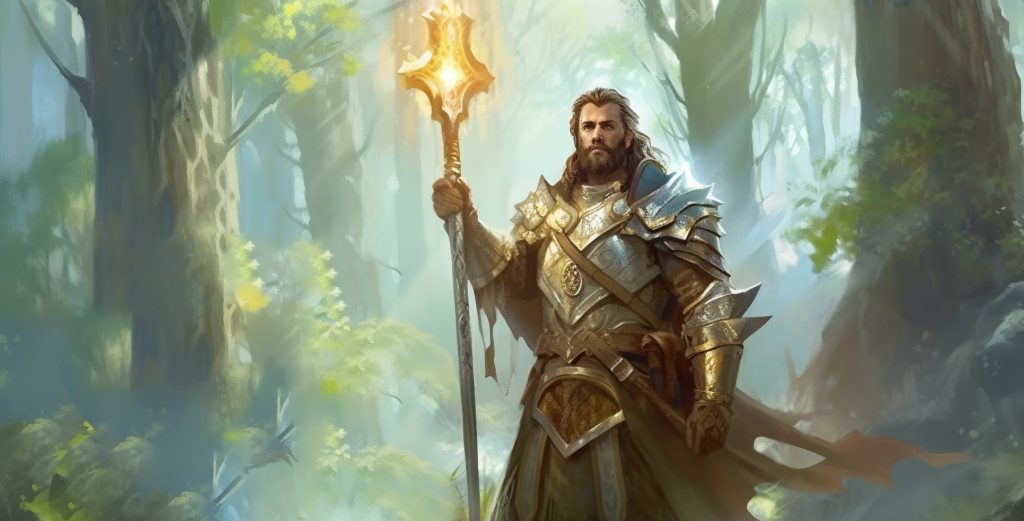
The contents in the following Paladin DnD 5E guides list of Fighting Styles are arranged alphabetically but divided by the books they are found in to make it easy to see what you can choose from if certain sources are not allowed at your table. Please note the styles found in TCoE are listed as optional class features in our Paladin DnD 5E guide, so be sure to check with your DM before choosing them. Some styles may be rated differently here than they were in the Fighter 5E guide, this is because the opportunity cost for a Paladin taking a Fighting Style is lower, as their available styles are far fewer.
PHB
Defense 5 – Permanent bonuses to your AC aren’t easy to come by, and being able to compensate for not using a shield, or having an even higher AC with a shield is great if a bit bland.
Dueling 5 – A great damage boost to one-handed weapons that scales with the number of attacks you get. Best for shield users and Dex based Paladins; better than using two hands with a longsword for Str based Paladins.
Great Weapon Fighting 2 – If you reroll when you roll under the average damage for your chosen great weapon, this can be a damage boost. However, it’s likely going to be a small bonus on average and is entirely down to the luck of the dice whether it helps or hurts.
Protection 2 – Potentially a good defensive reaction for your party, though it’s only applicable to shield users and the range is very short. Keep in mind the attack may still hit, even with disadvantage. If you were already looking to play a shield-using Paladin, and have some party members willing to fight shoulder to shoulder, this can be a good tanking choice.
TCoE
Blessed Warrior 4 – If you want to play less of a martial Paladin, or are just looking for some more casting support, this is a great style. Stand-out choices include Guidance and Toll the Dead, of course the higher your Charisma the better for the latter.
Blind Fighting 3 – This style does bring something to the Paladin they would have a hard time getting otherwise, blindsight, but its usefulness is pretty niche. This warrants a 3 because it is something your party can build around, such as making use of Darkness and Fog Cloud. That said, if you don’t often strategize or initiate its use, you can go a long time not needing it.
Interception 4 – Unlike Protection, this will always help your ally. As you declare it after your party member is hit, there’s no chance of wasting your reaction and they will always take less damage than if you hadn’t stepped in. Never say sticking your nose in someone else’s business never did any good!
Paladin Optional Class Features (TCoE) Guide
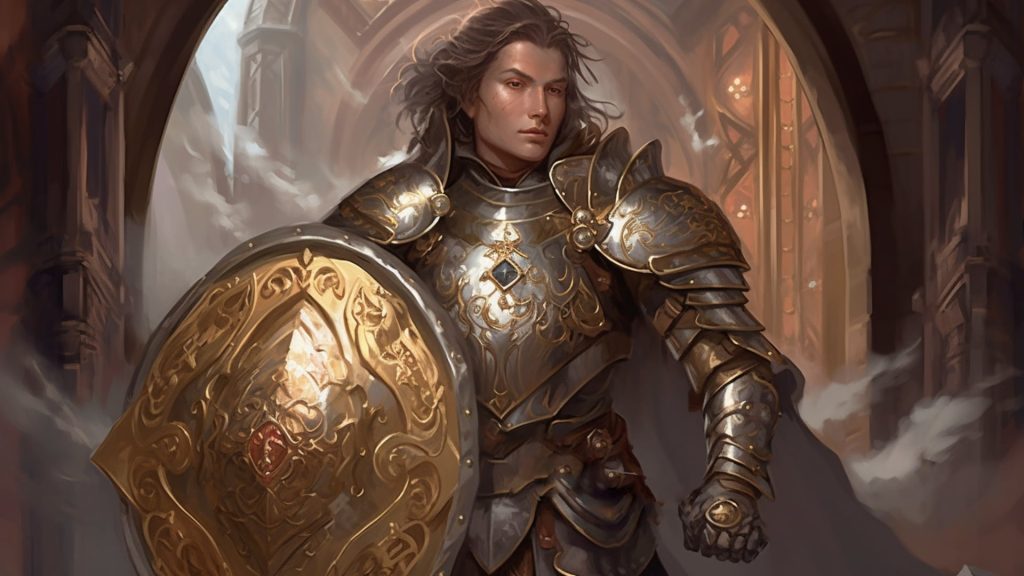
The Paladin only gets additional features from Tasha’s, no existing features are replaced. The additional Fighting Styles have already been covered above, and we will go through the remaining optional features in this section.
Harness Divine Power 5 – This is a fantastic ability, making your Paladin more efficient and opening up your options. If you are coming up to a short rest, but haven’t needed your Channel Divinity (CD), you can convert it to a spell slot so it doesn’t go to waste. Alternatively, if you don’t like your CD, or you prefer to use Divine Smite and cast spells, then you can just treat your CD as an additional spell slot.
Martial Versatility 3 – Less of a feature and more codifying a player being able to change an option they don’t like. This is nice to have for some tables, and fairly redundant for others.
Paladin Stats Guide

Paladins are one of the more MAD classes in 5E, needing either Strength or Dexterity for their attacks and AC, Charisma for their spellcasting and class abilities, and of course, they still want some Constitution to sure up their durability as a martial. The exact spread of stats you want depends on your build and personal priorities: some will want to max out both their attack stat and their Cha; others will be focused on being an effective martial and would be happy to leave their Cha lower; whilst some might have a middling attack stat and focus on Charisma to play a support role.
If your personal priorities see you wanting more in Str/Dex and Cha than you can start with at level 1, I recommend you take Variant Human if you are interested in any feats. ASIs are so few and far between that raising two stats leaves little room for feats, particularly in the levels you’re most likely to play or spend most of your time playing. You should consider your stats and priorities when you allocate your ability scores and choose a race at first level. Where you see a rating with two numbers separated by a slash, the second number is the rating if you are not using this stat as your primary:
Strength (5/2) – If you’re interested in heavy weapons and armor, this is the stat for you. Moreover, if you see your paladin as a warrior first you should ideally start with a 16 and advance it as quickly as you can. If you want to include feats from ASIs, try to get your Str to 18 first as this will help maintain your martial performance and consistency. If you are not Str focused but want to multiclass, you’ll need at least a 13 in this stat, however, an odd stat is a dead stat so ideally place a 14 here to multiclass. Though players who are happy being a single classed Paladin and don’t want to focus on Str or use heavy armor, you can dump this to a 10, I recommend avoiding negative modifiers unless they fit your character’s story/personality.
Dexterity (5/3) – If you’re interested in a Dex based Paladin, also known as a Dexadin, this should be treated largely the same as the Str recommendation above. However, if you choose to use light armor instead of medium armor, you will be more dependent on this stat for AC than your counterparts would be dependent on Str for theirs. Generally speaking, Dexadins gain a lot of benefits from their primary stat, such as high initiative and better Dex saves and skills, at the expense of one point lower AC and not using heavy or versatile weapons. Even if you focus on Str, having some degree of Dex is recommended for those benefits.
Constitution 3 – This is a very nice stat to have as high as possible. The hit points will help with tanking and being in melee, and the higher chance to maintain concentration on your spells is very useful. However, being a MAD class means you likely cannot afford a particularly high score here, try and aim for no less than a 14, ideally a 16.
Intelligence 1 – There’s no need for you to have Intelligence at any particular score unless you are interested in being good at Int based skills, or feel it suits your character.
Wisdom 3 – A good tertiary stat to have, if you think you may want to multiclass into a Wis requiring class then try to have at least a 14, otherwise whatever you can afford to put here is a good choice.
Charisma 5 – Cha is a great stat to have, it ties to many of your class features and will make you a more effective Paladin. I want to make it clear, however, you don’t need to have a high score in Cha to be a Paladin. Even if you dump it to 8, a lot of abilities have a minimum of one use clause in them and other key features like Divine Smite and Lay on Hands have no interaction with Cha at all. I recommend putting at least a 16 here, but you are by no means a bad Paladin if you decide otherwise.
Paladin DnD 5E Sacred Oaths (Subclasses) Guide
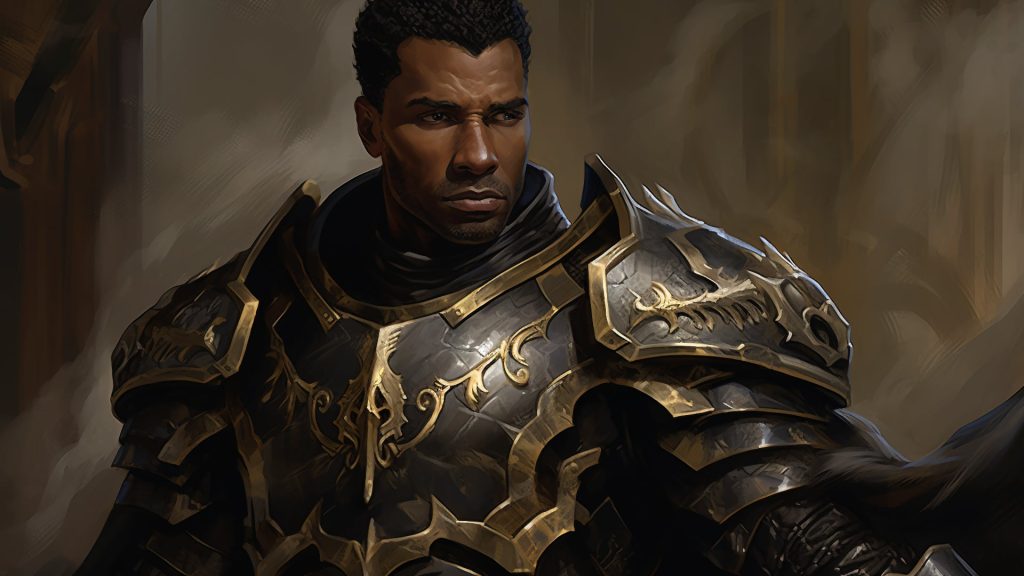
Paladins aren’t as heavily influenced by their subclasses mechanically as other classes, with the primary impact really amounting to the spells, as your Channel Divinity may be situational, and is at best a once per short rest resource. On the other hand, I would say Paladins are one of the more heavily affected classes in terms of role play, with the Oaths and the tenets that they present acting as a strong base to ground your character in, should you choose to do so. In our Paladin DnD 5E guide, we suggest that unless there is a particular spell or CD that is important for your build or really interests you, I would recommend choosing an Oath which resonates most with your character. There is an additional Oath option, the Oathbreaker, which will not be covered here as it is a DM-facing subclass, primarily intended for NPCs.
Channel Divinity options will be denoted by [CD].
Devotion
The more stereotypical of the Paladin Oaths, Devotion is driven by justice, virtue, and order, in true knight in shining armor fashion. Their abilities and spells are geared towards fighting the stereotypical enemy of Paladins: fiends, undead, and aberrations but they are also effective against other foes.
Sacred Weapon [CD] 3 – On paper, this might look really cool, a bigger to hit bonus means more chances to Smite or use something like the +10 damage from Great Weapon Master. In practice, losing your first action of a fight is a very steep cost. This gets a 3 for helping you overcome resistance or immunity to non-magical BPS, and the potential it has in longer combats.
Turn the Unholy [CD] 4 – There’s a lot of monsters with the fiend or undead creature type; being able to effectively prevent them from engaging in combat and potentially provoke opportunity attacks is a significant debuff worthy of your action.
Oath Spells 3 – There’s nothing bad here, with stand-out options being Dispel Magic and Flame Strike, but the selection overall feels niche.
Aura of Devotion 4 – Situational, but the amount of charmed-based effects on monsters is surprisingly large. This is worthy of a 4 as it completely shuts down the dangerous aspect of some creatures, and saves the party from the Barbarian being controlled by a spell like Dominate Monster… again.
Purity of Spirit 4 – A very powerful passive benefit, Protection from Evil and Good covers a large number of creature types, making this relevant in a lot of situations. This only gets a 4, however, as there’s still plenty of monstrosities out there for you to fight.
Holy Nimbus 3 – This capstone is okay, but nothing special, primarily because of the action cost with so little in return. 10 damage a round is vanishingly little at 20th level. Additionally, saves against spells cast by fiends and undead are very niche, not protecting you from their non-spell abilities is disappointing. This would have been a 4 if it only cost a bonus action to activate.
Ancients
Paladin meets Druid, this Oath is focused more on the principle of good overall, rather than law or chaos, and does so with a nature theme. The features and spells continue a theme of nature magic, combined with protection against fey and fiends, and enhancing the survivability of the Paladin. This subclass is often talked about because of its aura that gives resistance to spell damage.
Nature’s Wrath [CD] 1 – In tier 1, this can be an interesting control option for a Paladin, but as soon as Extra Attack comes online, this becomes a very hard-to-sell ability. Nature’s Wrath is like a single target Entangle spell, but with only a 10 feet range. If you can use the optional class features, you’re better off turning your CD into a spell slot.
Turn the Faithless [CD] 3 – This is essentially the same as the Devotion Paladin’s turn ability, but applying to Fey instead of undead, which can be handy in some campaigns. It’s worth noting this has less redundancy if you have a Cleric in the party compared to a Devotion Paladin unless said Cleric is of the Arcana domain.
Oath Spells 4 – The spells given here offer a nice Druid/Ranger feel to the Ancients Paladin overall. Ensnaring Strike is a superior version of Nature’s Wrath, and Misty Step adds a valuable tool to the Paladin’s toolkit.
Aura of Warding 3 – A fantastic aura… if it applies to you, that is. Whilst the power of halving damage for you and some, maybe all, party members is great, the reality is unless you’re fighting a lot of enemy spellcasters, this won’t help you at all. Great for certain adventures, but too powerful to rate only a 2.
Undying Sentinel 5 – This is like gaining a half-orc’s Relentless Endurance feature. Outside of instant death effects, such as the Disintegration spell, it’s extremely likely you would die at this point. The added ribbon of not feeling your age, or being vulnerable to magical aging is nice flavor added on.
Elder Champion 5 – An excellent capstone ability worth the action cost. With being able to cast a spell-like Destructive Wave as a bonus action on the same turn, I doubt you’d feel losing your action much. Excellent to pair with Ensnaring Strike, the disadvantage on the saving throw can be easily converted into advantage on your attacks, and additional damage.
Vengeance
If vengeance stories motivate you, the idea of chasing down the monsters who wronged the innocent stirs your righteous heart then this is the subclass for you. The mechanics support an aggressive playstyle with access to teleportation spells which give you the capability to pursue or your quarry or form a tactical retreat when necessary.
Abjure Enemy [CD] 2 – Frightened with a speed of zero is a very nice debuff, and the increased potency against fiends and undead makes this a more effective feature even for lower Charisma Paladins. Though, the effect disappearing when the creature takes damage completely undermines all of those benefits, especially when it took your entire action to set up. This can still be helpful but is not a go-to use of your Channel Divinity by any means.
Vow of Enmity [CD] 5 – A fantastic buff against bosses and other meaty single targets. Not only can this help land more smites, but can also aid if you went the route of using Great Weapon Master. Even though this applies to a single enemy, it’s powerful enough to warrant a 5.
Oath Spells 5 – An outstanding list of spells, the debuff/control options of Bane, Hold Person, Banishment, and Hold Monster add a nice depth to the Paladin beyond just hitting things. Whilst Hunter’s Mark and Haste make them even better at hitting things, and the Misty Step/Dimension Door combo adds a huge amount of mobility options.
Relentless Avenger 2 – A feature that can be useful for chasing down your quarry, but an enemy running away from you whilst provoking an opportunity attack is a bit too niche of a trigger.
Soul of Vengeance 4 – A significant improvement to your Vow of Enmity that will increase your damage output drastically, remember the reaction attack will have advantage. However it clashes with Relentless Avenger, using the reaction you’d need for an opportunity attack, and it would have been nice to see an independent feature or resource. After all, this will only benefit you once a short rest at most, and that’s only if you don’t use your CD for Abjure Enemy or to regain a spell slot.
Avenging Angel 3 – This is okay overall, the mobility of having a 60ft fly speed is a significant increase to the Paladin, and the fear aura has potential. The potential is again hindered by the frightened condition only lasting until the enemy takes damage; between this, the action cost, and some creatures being immune to the condition, this just doesn’t seem as powerful as it should be for a 20th level character.
Crown
Driven by their ideals of civilization, Crown Paladins are guided by the law, their loyalty to whichever form of civilization they have chosen, such as a nation or sovereign, and the belief of being responsible for your actions. Their mechanics are that of a tank Paladin, gaining access to spells and features to protect others or make themselves the center of hostile attention instead. This subclass is often forgotten about, as it was published in the SCAG but not later republished like other subclasses from the same book.
Champion Challenge [CD] 5 – A great tanking ability and one of the few abilities in the game that forces enemies to pay attention to you, rather than the squishy spellcasters 35 feet behind you. This should be used with caution, however, as you’re potentially making yourself the sole target of the encounter. Using this in conjunction with the Dodge action or Shield of Faith, which you would cast on a separate round, would be advisable unless you have built for high AC and/or high HP.
Turn the Tide [CD] 3 – This ability has a lot of potential and is potentially a lot of hit points. However, the formula doesn’t scale well and the “that can hear you” clause makes it unable to bring people back up from 0hp. That said, in tier 1 and even tier 2, this kind of widespread healing can really turn the tide of a losing battle, so it’s still worth a 3.
Oath Spells 4 – A very thematic selection of spells that emphasizes this Paladin wants to protect others by putting themselves in harm’s way. The stand-out spell here is Spirit Guardians, which would synergize well with Champion Challenge, this is the only Paladin to gain access to this great spell. I would have preferred to see a little more healing on the list, this is the perfect Paladin for Healing Word.
Divine Allegiance 2 – If you build your Paladin with soaking up large amounts of damage in mind, this can be very useful to keep your party members alive. However, the inability to reduce the damage, and the 5ft limit of the feature means you would likely be better off using the Interception style for the most part.
Unyielding Spirit 2 – Advantage against paralysis and being stunned is nice, but very niche to be the only feature at this late a level.
Exalted Champion 5 – Resistance to nonmagical Bludgeoning, Piercing, and Slashing damage is very, in practice most monster attacks that use those damage types aren’t magical. The advantage on Wisdom saving throws is also a large defensive boost at this level, where Wisdom saves are pretty common and the effects of failing them particularly unpleasant. The stand-out here is that this ability lasts for an entire hour, rather than the much shorter duration of other Oath capstones, allowing you to fit potentially several encounters into a single use.
Conquest
A very different take on the Paladin archetype, being devoted to crushing all who stand before you and amassing personal power, the mechanics and spells are based around inducing and extorting fear in your enemies. Between the focus on causing the frightened condition and their aura, Conquest Paladins have a reputation of being great battlefield control Paladins.
Conquering Presence [CD] 5 – A great debuff with no chance of friendly fire and no risk of removing the effect by damaging the creatures affected.
Guided Strike [CD] 3 – Being able to make a big miss a hit is very nice, however, a single hit on a class with Extra Attack is a very expensive use of your Channel Divinity. Nice to have in your back pocket to pull off a smite when you need to, but it makes far more sense on the War Cleric, which makes fewer attacks and gets more uses of their CD.
Oath Spells 5 – The overall theme of the list is very appropriate for the subclass, with a useful selection. Stand-out spells include Armor of Agathys, Spiritual Weapon, and Fear.
Aura of Conquest 5 – This aura ties to your CD and spell options, giving the subclass a very cohesive feel, the effect of the aura itself is also very powerful. Being able to lock down a frightened creature, and automatically doing damage to them, is a quick path to victory. This feature benefits from gaining as many ways to impose the frightened condition as possible and having a higher save DC against that condition.
Scornful Rebuke 5 – Automatic damage, of a good type, whenever someone hits you? What pushes this ability into a 5 is this working at range and both with weapons and spells.
Invincible Conqueror 5 – Simultaneously a huge buff to your damage and durability, with the extra attack allowing you to capitalize on Improved Divine Smite and the increased critical chance meaning you’re more likely to double your Divine Smite damage.
Redemption
A more social and reactive Paladin, the Oath of Redemption focuses on avoiding conflict or mitigating its consequences. This is executed through spells like Sleep, Calm Emotions, and Hypnotic Pattern, as well as Persuasion buffing, and punitive options for Channel Divinity. This subclass makes a strong candidate for the Charisma-focused, support Paladin playstyle.
Emissary of Peace [CD] 4 – A social ability is nice to see on a martial, a duration of 10 minutes makes it useful for entire social encounters. This is only a 4 as, whilst it’s a huge help, a +5 is not going to guarantee you any successes. To get the most out of this ability you really need proficiency in Persuasion and a decent Cha modifier.
Rebuke the Violent [CD] 5 – As enemy damage increases, this option will naturally scale in usefulness. What’s really nice about this option is that it inflicts radiant damage, so if a creature does a lot of poison damage, which they are immune to, the damage you inflict back upon them is fully felt regardless of the triggering type.
Oath Spells 3 – Whilst the spells are very appropriate for the subclass, they run into problems of usefulness and scaling. Sleep will age very poorly, Hold Person won’t work against most monsters, and Counterspell requires enemies to be spellcasters. That said having these spells as options is nice, and Hypnotic Pattern and Wall of Force are very useful control spells.
Aura of the Guardian 2 – A slightly better version of the 7th level Oath of the Crown feature.
Protective Spirit 4 – This is a very healthy amount of hp regeneration with some minor scaling built-in for the remaining levels. This doesn’t get a 5 as it likely won’t completely balance out using the Aura of the Guardian. Note: As it is not stated, when you halve your Paladin level for this feature, you should round down.
Emissary of Redemption 3 – Unfortunately, this is a mixed bag, whilst it fulfills the goal of the subclass and provides great benefits, using a lot of your core class features would negate this benefit entirely. This is best for support Paladins who focus on buffs and healing, or who are content with dealing with minions whilst other party members deal with the heavy-hitting enemies.
Glory
You thought Conquest was a different spin for a Paladin? Glory focuses on propelling you and your companions to legendary status by focusing on honing their body and skill and putting them to use through acts of courage. The mechanics are best summed up by the term remaining effective, gaining access to mobility buffs, Guiding Bolt as a ranged option, and Magic Weapon to allow you to counter resistance/immunity to nonmagical damage.
Peerless Athlete [CD] 1 – A very niche ability that will rarely be worth spending your CD on unless you build a grappling Paladin. Even as an out of combat CD option, this doesn’t feel good.
Inspiring Smite [CD] 2 – Whilst you can in theory apply these temporary hit points to as many creatures as you have temp hp, realistically for this ability to be worth anything you need to keep the number of creatures to one or two. The use of your bonus action feels a little clunky and makes the activation of this ability dependent on not only multiple factors, but spending an entirely separate resource. This would have easily been a 3 if you could activate it as a bonus action independently.
Oath Spells 5 – This is a very good spread of spells, with Guiding Bolt covering the normal ranged problems a Paladin might encounter, Enhance Ability providing some utility, Magic Weapon allowing them to overcome resistance/immunity to nonmagical BPS as needed, and so on.
Aura of Alacrity 2 – Not only is this niche it’s poorly designed, the concept of charging into battle together across a large distance is very cool, but if this Paladin has a higher initiative than a party member, that member won’t get this bonus unless the Paladin forgoes moving. The range should have been at least 10 feet to start with to make the ability more feasible. This still warrants a 2, as a self-speed bump of 10ft can be useful to a melee character in particular.
Glorious Defense 3 – This can be a very potent defensive and retribution ability, however, it is held back by requiring the party to stay tightly clustered together in melee range of the enemy and tying the number of uses to your Charisma modifier for some reason.
Living Legend 4 – Far from the best capstone we’ve seen in the Oaths, but being guaranteed at least one hit a turn and a second chance at passing saving throws is great and being able to do this more than once per long rest by using a 5th level spell slot is a good option to have.
Watchers
Sworn to protect the world from extraplanar threats, this subclass is dedicated to being the ever-vigilant sentry against the threats who seek to invade from beyond our own world. Interestingly these Paladins are said to create and maintain a network of spies and informants, in order to keep an eye on any cult activity. Notably, they get access to typically more arcane magic, including Alarm and Counterspell.
Watcher’s Will [CD] 3 – THis can be very helpful against certain monsters and especially in higher levels. However, it doesn’t prompt new saves for effects a creature is already under, and with a duration of only a minute it likely means giving up the first or second round of your attacks to set this up.
Abjure the Extraplanar [CD] 5 – Like the other turn features we’ve covered so far, but covering twice as many creature types!
Oath Spells 3 – A thematic list, with a lot of utility in it. It would have been nice to see some better combat-relevant entries.
Aura of the Sentinel 5 – Relevant every single combat and scales with you, whilst enemy initiative typically doesn’t.
Vigilant Rebuke 3 – The damage isn’t bad for a reaction, but requiring a creature to succeed on a saving throw makes the usefulness of this ability completely random. Note: You can use this ability when a party member succeeds on a saving throw, perhaps using your Watcher’s Will, or when a monster saves against an effect your party is trying to use.
Mortal Bulwark 4 – This is a very powerful ability, mixing general combat effectiveness with the ability to potentially just end an encounter. This only warrants a 4 because it covers a lot of creature types, but not all of them, and a capstone should ideally not be this niche.
Paladin 5E Recommended Spells Guide
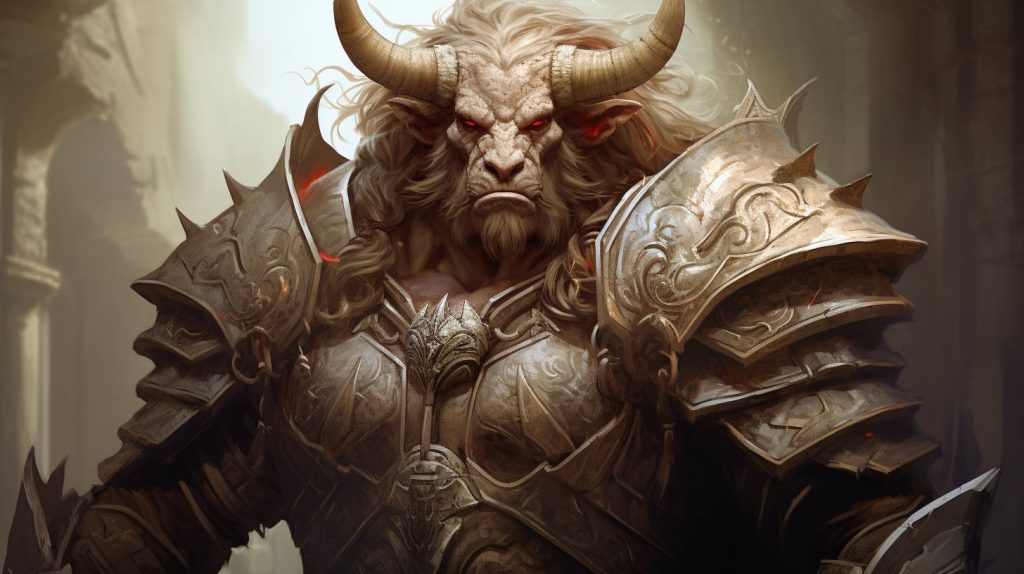
Whilst the Paladin is primarily a martial, choosing spells can effectively augment, and enhance your chosen playstyle. This can be daunting if you’re new to the class, or just not comfortable with spellcasting, the spells presented in this list are intended to give you generally useful options whilst you learn what spells you like and use most.
Guidance [Cantrip] – Applicable if you chose the Blessed Warrior Fighting Style, this is a very useful cantrip to pick up to help your party pass the skill checks which really matter.
Bless [1st level Spell] – Not only great for support Paladins, this spell, unfortunately, takes your entire action, but rewards the party with a significant boost to their accuracy and save defense. It’s recommended to include yourself as a target of this spell, to help you keep concentration whilst getting attacked in combat.
Cure Wounds [1st level Spell] – Whilst you have Lay on Hands, it never hurts to have another option for healing yourself and your party. This can be especially useful if you need to use your Lay on Hands to cure a disease or neutralize a poison, rather than heal hit point damage.
Divine Favor [1st level Spell] – A damage boosting alternative to Divine Smite, this is a great spell for longer fights, or if you need to spread radiant damage, such as shutting down the regeneration of vampire spawn.
Protection from Evil and Good [1st level Spell] – A great defensive buff that works against a large enough number of creature types to be relevant frequently enough to keep on hand.
Aid [2nd level Spell] – Not to be confused with temporary hit points, this spell increases your actual hit point maximum, meaning you can heal these newfound points. This is a great durability buff for your party and is especially useful for lower hit dice characters like Wizards.
Find Steed [2nd level Spell] – Being able to summon your own mount, enhanced with a telepathic and magical link, is a very useful means of transportation. You can also use your summoned creature as a combat companion or as a scout/sentry. If you’re adventuring in an environment not suitable for large mounts, such as confined spaces and ladder-ridden dungeons, you can instead summon a mastiff to better suit the environment. Small-sized Paladins can actually ride their mastiffs into those places!
Magic Weapon [2nd level Spell] – Essential for ensuring you’re never missing out on damage because you haven’t found a magical weapon yet, or providing the same courtesy to a martial party member.
Paladin 5E Race Choices Guide
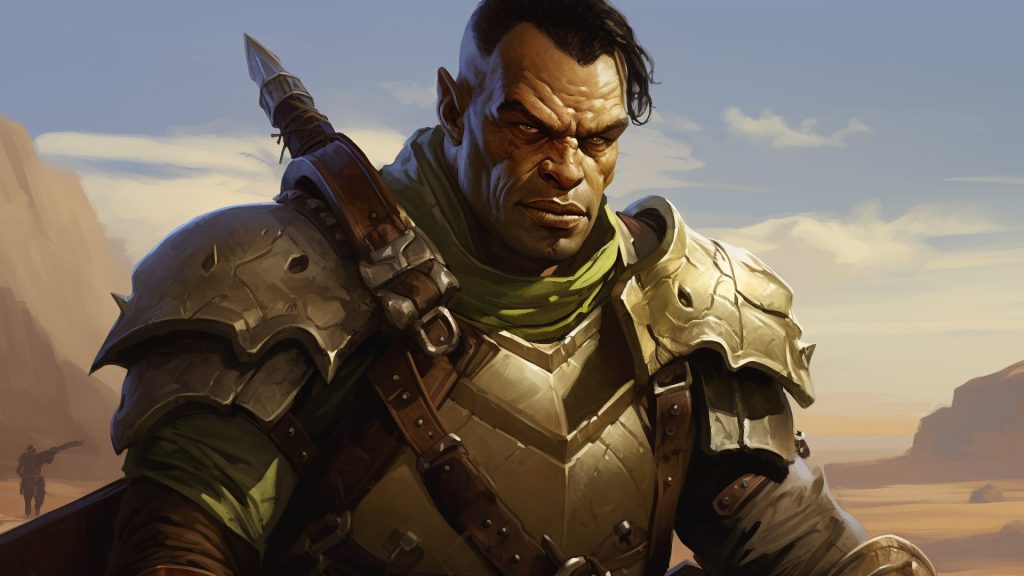
Races are good places to pick up abilities for certain character concepts, so if you’re thinking about playing a Paladin build but that race isn’t rated well here, it doesn’t mean your particular combination wouldn’t work or be fun to play. Like I said previously, it’s actually pretty difficult to make a truly bad character in 5e.
Here are some examples of strong race choices for a Paladin:
Dragonborn 4 – Great stats, a damage resistance, and a breath weapon! Whilst the breath weapon is lackluster in terms of damage, but the option of an elemental damage type and a ranged/AOE saved-based ability instead of relying solely on melee attacks. The Fizban’s version of this race is an even better option!
Goblin 5 – A perfect Dexadin, bringing additional nova damage in the form of Fury of the Small, whilst giving you the ability to skirmish with Nimble Escape.
Half-Elf 5 – You can boost your Charisma, Constitution, and the physical stat of your choice, whilst getting skills and some other nice ribbons. A great Paladin, regardless your primary stat, and potentially frees up an ASI for a feat.
Paladin DnD 5E Feats Guide

With a reliance on multiple stats, but no additional ASIs, feats are at a premium for a Paladin making them most available for a variant human or those okay with slower stat progression. Combat-orientated feats are generally better for Paladins, however, feats which provide additional spellcasting can be valuable for the half casting class, especially support Paladins, and this will be reflected in their rating and description.
Here are some examples of strong feat choices for a Paladin:
Great Weapon Master 5 – A potential damage boost and source of bonus action attacks, for Paladins using great weapons this is a great feat. This is particularly useful for Vengeance and Conquest Paladins, as they both have accuracy-increasing Channel Divinity options.
Heavy Armor Master 4 – A great way to round out the Strength of a tank Paladin.
Sentinel 5 – Excellent tanking feat, this will allow you to make reaction attacks more often and give you the ability to lock down the battlefield.
Dragon Fear [Dragonborn] 4 – You can round out your choice of three different stats, all great for Paladins, and gain a good debuff that synergizes well with a Conquest Paladin. If you’re playing Fizban’s version of the Dragonborn this becomes a 5 due to the better action economy.
Slasher 5 – If you favor slashing weapons like longswords, scimitars, and great axes this feat gives you a great way to hinder the mobility of your enemies and adds a nasty debuff when you crit, to add insult to smite-based injury.
Paladin DnD 5E Multiclassing Guide
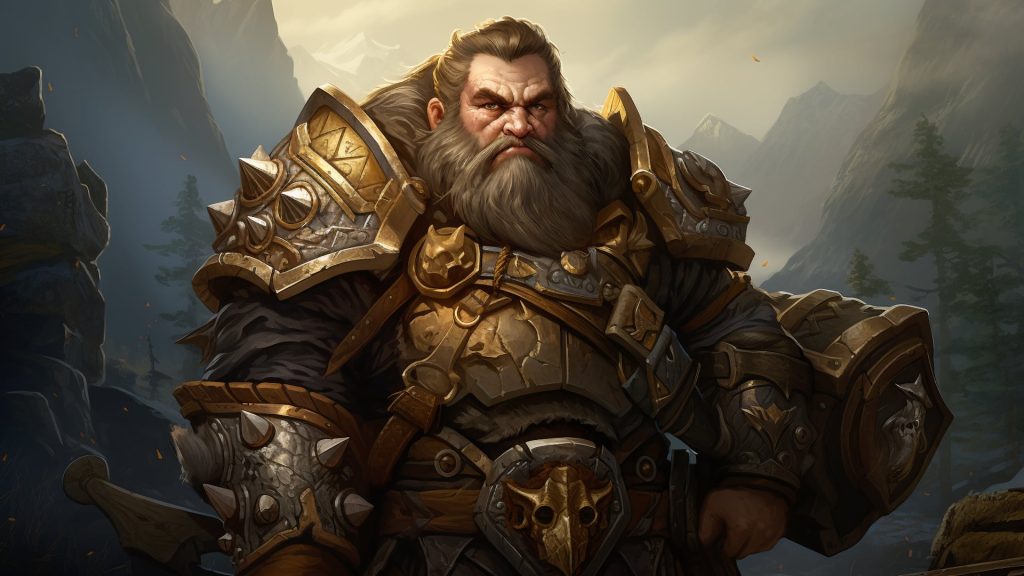
In this section of our Paladin 5E guide, we’ll review each class in terms of how well they multiclass with Paladin, mentioning how many levels and what subclass (if any) would work best. The ratings take multiclassing prerequisites into consideration; if a multiclass will require you to have a 13 in a stat other than Str or Cha, it will likely receive a lower score unless the stat is one you would already have at 13 or higher, for example, Dexterity on a Dexadin.
General multiclass tips for the Paladin:
- The multiclass prerequisites for a Paladin are Str and Cha scores of 13 or higher, this means multiclassing is easier for a Strength-based Paladin than a Dexadin. Multiclassing a Dexadin is still viable, but it will make you more MAD and require an investment in Strength you may not really use otherwise.
- Due to the Paladin being a half caster with Lay on Hands scaling with each level, taking levels in another class can significantly delay your Paladin progress, because of this it’s important to consider when deciding how many levels, or when to take those levels. For example, you may want to ask yourself the question “do I have enough Lay on Hands points to take 3 levels of Fighter, and still effectively heal my allies during that time?” Your answer may push you towards another level or two of Paladin first or encourage you to jump straight to Fighter.
- If your primary interest in Paladin is using Divine Smite taking levels in any fullcaster class will give you a much faster spell slot progression to fuel those smites.
- Some popular jumping points for the Paladin class are 2nd level when you have Divine Smite and Spellcasting, 5th level when you have Extra Attack, and 6th level when you have all of those features and your Aura of Protection.
- Features which increase your critical hit range, or give you advantage are desirable for a Paladin, as you can choose to use Divine Smite after you’ve seen it’s a critical hit.
Artificer 2 – Making your own magic items and gaining access to spells which a Paladin wouldn’t normally is a large increase in the utility, and potentially the power, of a Paladin. However, requiring an Int of 13 is a steep cost for a MAD character and you would have to go two levels in to gain Infusions, making this a very niche combination. Note: The Artificer has a unique spellcasting progression that increases your spellcasting level by 1 when you take a level in it, despite having similar spellcasting to a half caster like the Paladin. This means the spell slot gain is the same with a level of Artificer as it would be with a level of Cleric, Wizard, etc. If you take this class to third level, Armorer, specifically the Guardian form, is recommended for the temporary HP and Thunder Gauntlets.
Barbarian 4 – Excellent for those looking to make a durable Paladin or a grappling Paladin, the small damage boost is a nice bump, but minor overall. This class is rewarding for anywhere between a 1-3 dip depending on what you’re looking for, with two levels bringing Reckless Attack and Danger Sense adding a lot of value to your build. If you choose to go three levels in, Totem (Bear) is a huge durability boost, Zealot gives you a damage boost, and Path of the Beast offers a mix of defense and offense with the tail and claws. If you’re looking to build a tank that holds the attention of enemies, the Ancestral Guardian subclass is an excellent pick. This is only held back from being a 5 due to locking you out of spells mid-combat when you’re raging and discouraging you from wearing heavy armor whilst being a Strength-based character.
Bard 3 – Best for support Paladins who focus on Charisma, this class will allow any Paladin to perform as a competent skill monkey with access to an additional skill, Jack of All Trades, and Expertise depending on how many levels you take in the class. This is all in addition to the utility/support spells which the Bard primarily gains access to, and the increase in your spell slot progression. If you choose to gain a subclass from this multiclass the recommended options for combat are the College of Swords, which gives you maneuver style uses for your Bardic Inspiration dice, and a second Fighting Style, or the College of Whispers which gives you a Divine Smite-like use for the same dice. If you want to further your side job as a skill monkey or want access to certain spells, the College of Lore grants you unrestricted spell choices and additional Expertise. This class is only rated a 3 as it doesn’t make you better at being a Paladin in general, whilst giving you smaller Hit Dice.
Cleric 3 – Whilst MAD, Wisdom is a good tertiary stat to have some investment in, and gaining a subclass at Cleric level 1 and Channel Divinity the following level makes this a potent, front-loaded dip. The subclass you choose is important here and should be dictated by what role you are trying to strengthen; a dip into Life Cleric will make you a very potent healer when combined with Lay on Hands, choosing the War Domain can allow you to do more nova damage with bonus action attacks, and the Forge Domain allows you to create your own magic weapon. The viability of this multiclass is entirely dependent on your ability scores and your priorities, depending on your build this can be very valuable.
Druid 2 – This is only worth it if you already have the necessary Wisdom and there are Druid-specific spells that really interest you. You’ll still get a faster scaling of your spell slots, but you need to take at least two levels to gain a substantial benefit. If you do take two levels, you’ll gain access to Wild Shape, which can be fantastic as a way to scout, and a subclass. Recommended subclasses are Circle of Dreams for access to bonus action healing, and Circle of Stars for a variety of benefits including Guidance, a bonus to healing, or an easier time maintaining concentration.
Fighter 5 – With synergistic multiclassing requirements, and goodies at every level which actively enhance the core martial identity of the Paladin. The hard thing here is to stop yourself from taking more levels with how packed full of features the Fighter levels are. Anywhere between one and four levels are recommended depending on what you’re looking to gain, with a two-level dip giving you a huge power increase with a second Fighting Style, Second Wind, and Action Surge. Importantly the Fighter adds more short rest resources to the Paladin, improving their endurance on longer, or harder, adventuring days. Recommended subclasses include the Battle Master for versatility and added damage, for example using Trip Attack to add more damage on your first attack and potentially advantage on your subsequent attack, and Samurai which can give you advantage at will three times per long rest, allowing you to increase your chances of hitting and getting critical hits for smiting. If you take Samurai and use Fighting Spirit, it is best to also use your Action Surge to maximize the value of Fighting Spirit.
Monk 1 – Incredibly MAD, requiring four stats of 13 or higher, this multiclass is hampered further by the Monk relying on their Ki pool and multiple features not functioning in armor. Whilst this could be done, without rolling very high stats it’s generally advisable to avoid this multiclass. If you do choose to take a Monk dip and gain a subclass Kensei, Sun Soul, and Long Death are recommended. This is because all of these subclasses have abilities that are not reliant on spending Ki, allowing you to save your few Ki points for Flurry of Blows, Patient Defense, or Step of the Wind as you see fit.
Ranger 1 – Avoid unless you really want to mix these two classes for roleplay purposes, this combination has the same MADness at the Monk, whilst giving you little benefit. The result of this is requiring at least two levels, primarily gaining a second FIghting Style and Ranger spells. If you do choose to go for a Ranger subclass Gloom Stalker is highly recommended for the additional attack on the first round of every combat, as well as a slew of other benefits.
Rogue 3 – Best for Dexadins and Strength-based Paladins who either use two weapons or a shield, as they are incentivized to use finesse weapons for their own reasons. The addition of Sneak Attack is a relatively minor damage increase for a multiclass dip, I would recommend dipping into Rogue primarily for the Expertise, Thieves’ Tools proficiency, and Cunning Action. If you choose to gain a Rogue subclass, Swashbuckler has a lot of synergy with your Charisma and enables you to be an effective skirmisher without needing to rely on Cunning Action to Disengage. Arcane Trickster can be of great value to a Paladin, increasing your spellcaster level whilst giving you access to Wizard spells like Shield and Absorb Elements.
Sorcerer 5 – This multiclass is referred to as a Sorcadin and is very popular in the optimization community for builds focusing on using Divine Smite. Like the Bard, Sorcerer synergizes well with your Charisma spellcasting, unlike the Bard it provides a subclass at first level and access to spells like Shield and Magic Missile to strengthen your defenses and cover your ranged weakness. Taking Sorcerer levels is a rewarding process, with something for you at each level, much like Fighter the hard part here is getting yourself to stop as the Sorcery Points and spell slots mount up. Divine Soul is highly recommended as a subclass for giving you an additional spell, access to Charisma-based Cleric spells like Healing Word and Spiritual Weapons, and a great short rest offensive/defensive buff in Favored by the Gods. Another great choice is the Clockwork Soul subclass, which gives you the ability to cancel out advantage or disadvantage, an ability that scales with your proficiency bonus, a nice touch for a multiclassed character. Two levels will give the ability to create an additional 1st level spell slot once per long rest, and three levels will give you access to Metamagic, allowing you to do things like cast a spell as a bonus action.
Warlock 5 – Similar to the Sorcerer this combination has a catchy name, the Pallock or Padlock, with a focus on the short rest spell slots which the Warlock provides fueling Divine Smite for the most part. Being a Charisma spellcaster with a subclass at first level makes Warlock a very potent dip, with Invocations adding a lot of potential to a Paladin. Invocations to consider if you’re taking two levels include Fiendish VIgor for at-will temp HP generation, Devil’s Sight for those without darkvision or looking to gain advantage from Darkness, or Eldritch Smite for those taking five or more levels and looking to double smite. Recommended patrons for a Paladin are the Hexblade to make yourself mostly Cha SAD, gain a damage bump from Hexblade’s Curse, and access to Shield, and the Celestial for access to bonus action healing and a Charisma-based Guiding Bolt.
Wizard 2 – The small Hit Die and requirement of Intelligence are difficult to overcome, but if Wizard suits your character concept there is some value to be had here. The faster spell slot progression and Arcane Recovery make you a Divine Smite machine, whilst access to defensive spells like Shield and Absorb Elements is welcome on every character. Try and focus on spells that don’t require your Int modifier and rituals to expand your utility. If you take two levels the best choice for a Paladin is the War Wizard, which gives you an at-will Shield-like ability or an excellent +4 to a saving throw with the drawback of not being able to cast a leveled spell not hindering your smiting arm in the least.
Do you feel it, adventurer? The divine light beckons you, nay, chooses you to live by a sacred oath. We hope you’ve found this Paladin 5E guide emboldening on your path to vanquish evil, or depending on your subclass, glory! If you’re interested in playing a Paladin, check out our in-depth guide to playing a Vengeance Paladin. Until next time, remember, there’s nothing in your adventuring life that can’t be fixed with liberal use of Divine Smite and Lay on Hands, maybe even in real life too! Looking at you, dishes.


